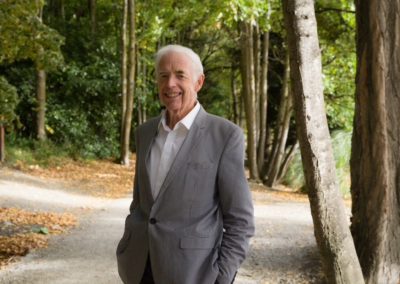Associate Prof Joanna Williams’ work at the University of Otago is all about blood – and the clues hidden within that might tell us what is going on in the brain. Using the blood as a window into the brain, Joanna aims to find biomarkers that can help us diagnose Alzheimer’s disease early, long before symptoms appear and the brain is too damaged for interventions to take effect.
“The goal of our biomarker work is to find the people who are in the very early stages of Alzheimer’s disease, when the changes in the brain first appear,” Joanna explains. “We think this might be the perfect point to intervene and change the course of the disease.”
Even though we already have reliable tests to detect Alzheimer’s – PET scans and lumbar punctures can measure the accumulation of amyloid beta in the brain – they are very invasive and expensive. A blood test, however, can be done simply and routinely, which is why scientists across the world have been trying to identify different types of molecules that mirror the processes happening in the brain and that could be used as blood-borne diagnostic biomarkers.
Joanna and her team are focusing specifically on microRNA, small molecules of RNA that are released from neurons and enter the blood. Research on microRNA is relatively new, however, there is now a lot of evidence that microRNA can reflect neurological disease processes – and there are other factors that make it a potentially ideal candidate for biomarkers. Joanna points out: “Longer RNA and proteins are vulnerable to degradation, but microRNA appear to be really stable when they are released from cells into the blood in part as they are protected in extracellular vesicles (or exosome), a lipid layer or associated with various protein complexes.”
To see if the levels of microRNA alter in the disease progression, Joanna’s team assessed blood plasma levels of 182 neurodegeneration-related microRNA in three different groups (relative to their control groups) from the Australian Imaging Biomarkers and Lifestyle Study of Ageing (AIBL), and cohorts from Dunedin and the United States: a group of people that have been diagnosed with Alzheimer’s disease, a group of people living with mild cognitive impairment, and a group of people who have tested amyloid positive in PET scans but are cognitively normal still.
“The Holy Grail would be to find a marker that goes up with the disease and stays up,” Joanna says, “but it’s not quite that simple.” Her studies confirmed that levels of microRNA indeed change with the progression of the disease and will go up and down over the course of the disease.
The research team also identified microRNA biomarkers correlating to distinct stages of the disease and could predict which of the three groups the plasma sample belongs to – for example, they found a significant correlation between three microRNA and amyloid beta load. They narrowed down the list from 182 microRNA to a handful of robust markers that change in the same direction for all the people within in each group. And when combined, the specific microRNA markers provide good diagnostic accuracy.
However, as the markers are quite dynamic, the researchers have to be mindful about how they can offer them us a useful tool for clinical application. Currently, blood biomarkers are not as specific as, for example, a PET scan – they might be able to pick up early neurodegeneration but might not necessarily tell us the specific disease – but Joanna considers them as a valuable tool for an early triage process: “If we picked up a change in one of the markers at an early or routine blood test, we could offer further testing and follow the person to monitor cognitive issues as well as changes in the biomarker. It would also give us a chance to intervene with lifestyle therapy and follow the patient’s response to it, and hopefully in the future, intervene with drug therapy.”
To further refine the biomarkers into a robust diagnostic tool, Joanna and her team now want to strengthen the most important part of the study that focuses on the amyloid positive but cognitively normal group. “We really value the contributions of all our participants, but these volunteers are the hardest to find,” Joanna explains. They have already been able to access another cohort through the Australian Imaging Biomarkers and Lifestyle Study of Ageing (AIBL) (and the KAVIAH cohort), and ideally, would also like to include a New Zealand cohort representing the diversity of our communities.
There is a lot of work to be done still, but for Joanna, there is also a lot of hope in Alzheimer’s research at the moment: “A number of antibody therapies that remove amyloid from the brain look very promising. In combination with blood biomarkers that allow early detection, we might actually have a chance of making a real impact on this disease.” And with the many talented scientists, at Brain Research New Zealand and beyond, working to understand neurodegeneration from different angles, there are many pathways – and lines of hope – to combat Alzheimer’s disease.



